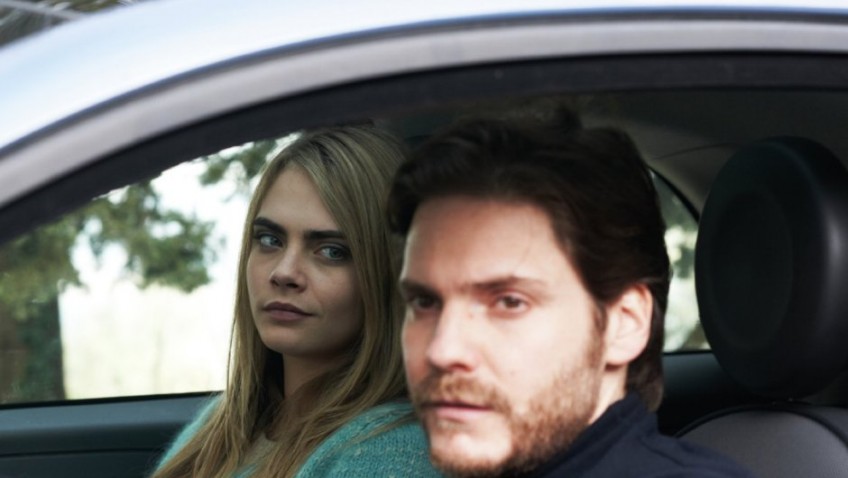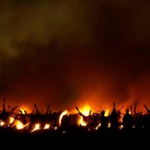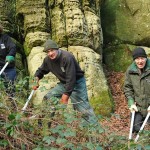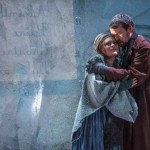The unsolved murder of the 21-year-old British student exchange student Meredith Kercher, in Perugia in November 2007, is one of, if not the most talked about murders of the millennium. Based on Barbie Latza Nadeau’s book Angel Face, Michael Winterbottom’s The Face of an Angel uses the murder, albeit with changed names and locations, as the backdrop for a critique of the jaded media and a celebration of innocence.
For those reporting on this tragedy, it is a pay cheque (lasting seven years), a pleasant stay in a beautiful city and, in the case of the protagonist, a reassessment of his personal values. No one seems to have enjoyed the free trip more than super-model Cara Delevingne who, playing an ingenuous, free-spirited stand-in for Kercher, strips down to her underwear for a gratuitous off-season dip in the Mediterranean.
Thomas Lang (Daniel Brühl, Rush, The Edukators, Goodbye Lenin) is a film director who has obtained the financial backing to adapt American journalist Simone Ford’s (Kate Beckinsale) book on the controversial trial of American student Jessica Fuller for the murder of her British flatmate Elizabeth Pryce. Ford takes Lang to Siena where the fictionalised murder took place and, before long, she takes him to bed. Acting as a guide (references to the Divine Comedy crop up everywhere) through this inferno, she introduces him to the cynical, callous media wolves. Their affair has hardly begun when Lang gets bored and goes in search of someone more pure and innocent – and younger.
Lang, we cannot help but notice, is not so much on a journey as on a trip of his own, aided by the cocaine he snorts. Separated from his wife and his beloved young daughter, with whom he speaks on Skype, Lang strikes up a platonic friendship with young British student Melanie (Delevingne), who is working in a bar. Although she has only been in the country for six months, Lang hires her to show him the real city unknown to tourists.
There is a worrying scene at the end where Melanie lies across an unmade hotel bed as Lang glances longingly from her to a picture of his daughter, but we are not to draw the wrong conclusions from this. Melanie/Beatrice is a much better guide than Simone Ford because Melanie is into Dante, not grisly murders.
For those in the audience, Lang’s fixation on Dante Alighieri and his beloved deceased Beatrice, grows increasingly pretentious. In the production notes, the Face of Burberry, herself explains, “The story of Dante going through the inferno (sic) and being led out by Beatrice is completely mirrored in Daniel’s journey.” It is Dante, and not Amanda Knox et al, who changes Lang’s life. When Lang tells his producers that his film about the murder and trial will be a story of love, they share our bemused reaction and decide to find another director. You might decide to find the Exit sign.
There are some thought-provoking ideas behind The Face of an Angel, but it is difficult to engage with them. The ideas are not integrated into the story; overwhelm it. The connection between the murder and where it leads Lang is forced and nebulous.
Lang is supposed to be traumatised by the murder story but neither he nor Scriptwriter Paul Viragh (Ashes, Sex & Drugs & Rock & Roll,) have any real insights or offer us anything we do not already know. Lang’s ‘journey’ is unconvincing in part because it is so rushed and in part because Lang’s character is so underwritten and unsympathetic.
Lang’s dalliance with the waif, Melanie, is so clichéd and superficial that it is hard to believe it. Why would Melanie go travelling with this depressed, older man: a complete stranger who is following her around Siena? The unsolved murder casts a short shadow. Poor Brühl, such a terrific actor when properly cast and directed, is left to gawk at his statuesque companion while looking rather embarrassed to be doing so.
The production notes tell us that ‘Central to the authenticity of the film is the decision to shoot in Siena, another ancient Italian university town, in place of Perugia.’ This is a curious statement. If the murder and trial took place in Perugia, Umbria, how is it authentic to shoot in Siena, Tuscany?
In fact, Winterbottom does use footage shot in Perugia (notably the appeal announcement in the square outside the court), leaving all but lawyers and location scouts to wonder why the whole thing was not filmed there. The production notes provide an unsatisfactory clue. ‘The location is also important since the Tuscany region was formerly home to the poet Dante Alighieri’. Tuscany, yes, but before his permanent exile from that region, Dante lived in Florence, not Siena.
Joyce Glasser – MT film reviewer




